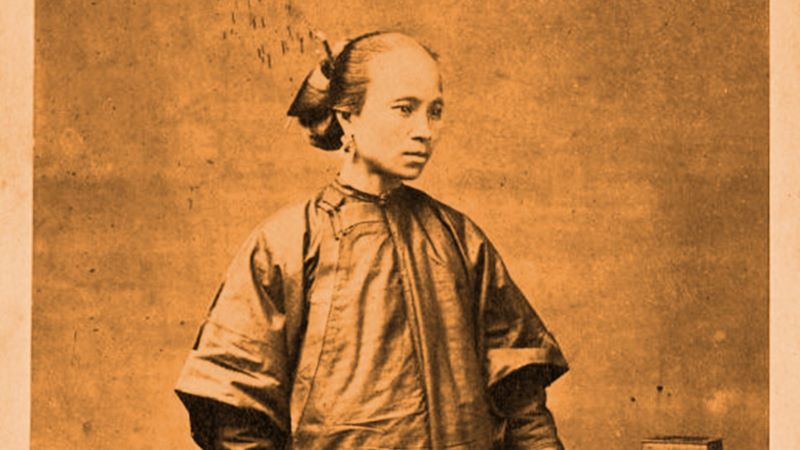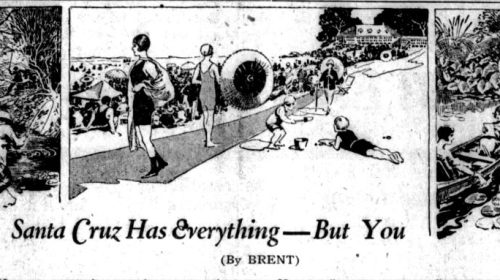Chinese Pioneers: Exhibit at Belardi Gallery in Felton
Contributed by the San Lorenzo Valley Museum
Now through November 12, visitors can view a temporary exhibit titled Chinese Pioneers: Power and Politics in Exclusion Era Photographs at the Faye G. Belardi Memorial Gallery in Felton. This exhibition explores the social, political, and judicial disenfranchisement of Chinese Californians — as well as moments of Chinese agency and resilience — in the decades before and after the 1882 Chinese Exclusion Act.
The exhibition examines how photography played a potent role in both Chinese people’s interactions with the dominant culture and in the government’s fledgling systems of registration, identification, and surveillance.
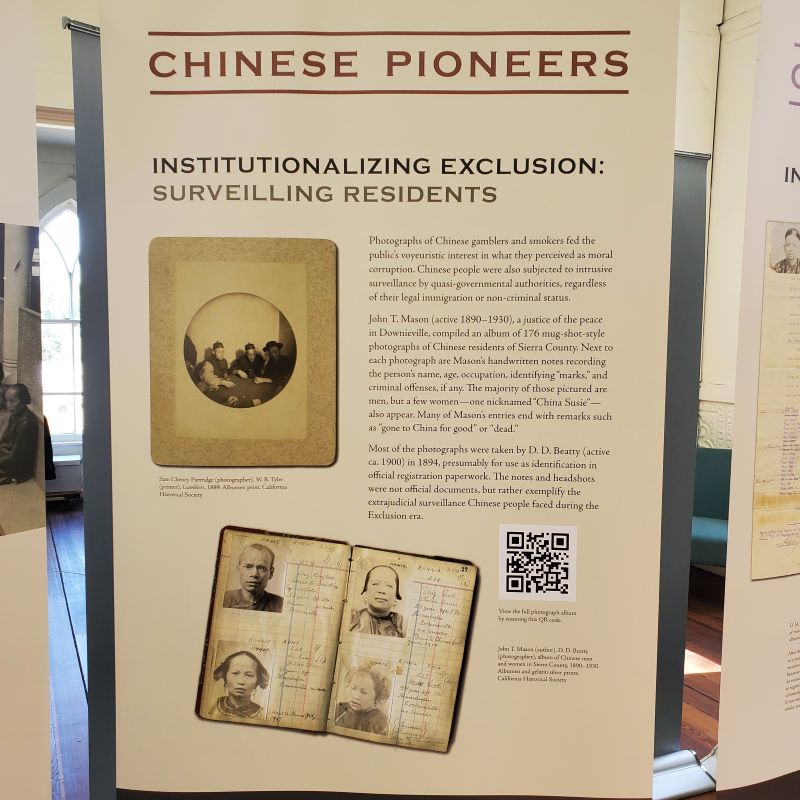
The exhibition begins in the Gold Rush era, when significant numbers of Chinese people began to arrive in California. Anti-Chinese sentiment led to protests, violence, and vigilante expulsions up and down the West Coast. The Chinese Exclusion Act banned Chinese laborers from immigrating, becoming citizens, and tightened restrictions on previous residents reentering the country. It is against this backdrop that the exhibition considers the broad range of nineteenth-century imagery depicting the first generations of Chinese Californians and how visual culture influenced, aligned with, and diverged from the politics of Exclusion and the actions of the state.
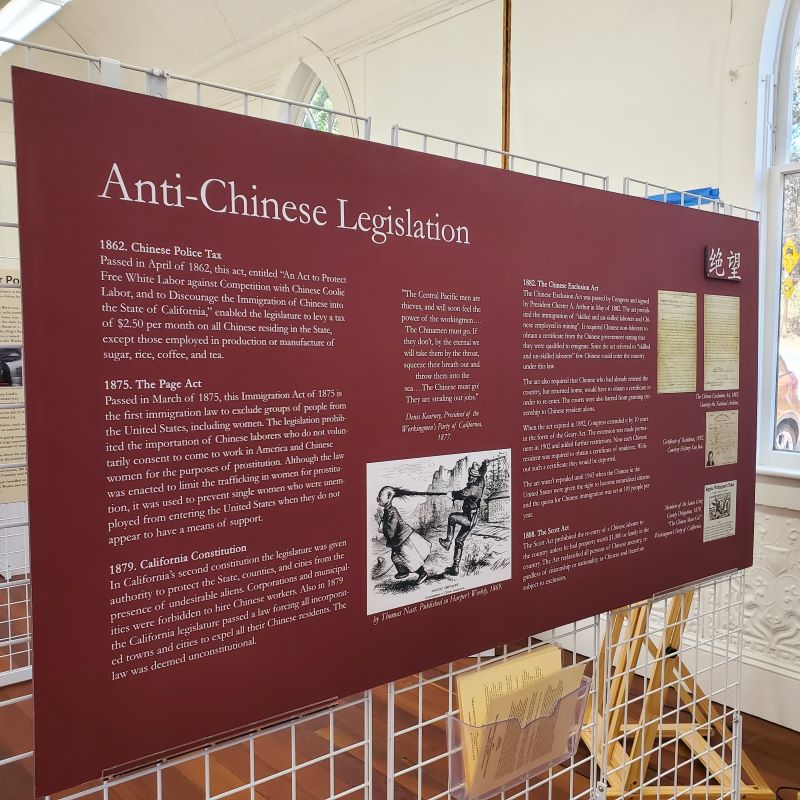
Featured in the exhibition are examples of how different types of photography (studio portraits, street photography, and surveillance) reflect different facets of the Chinese experience. While studio portraits presented a dignified image of the subject, street photography highlighted the unequal social relations that existed between the Chinese and non-Chinese populations. Government headshots were used as a tool in the suppression, surveillance, and criminalization of Chinese residents through systems of registration and identification. Together, these varying styles of photography shaped the perception of the Chinese in the Exclusion Era years.
Anti-Chinese Movement in the San Lorenzo Valley
In addition, we examine the life of the Chinese population of the San Lorenzo Valley from the 1860s when they first arrived here in the Valley to work at the California Blasting Powder Works to 1920. We especially look at the “Chinese Must Go” movement which resulted in driving out the Chinese men working here. In 1880, in Felton 21% of the population was Chinese; Chinese men that is. None of the Chinese in the San Lorenzo Valley were the head of a household.
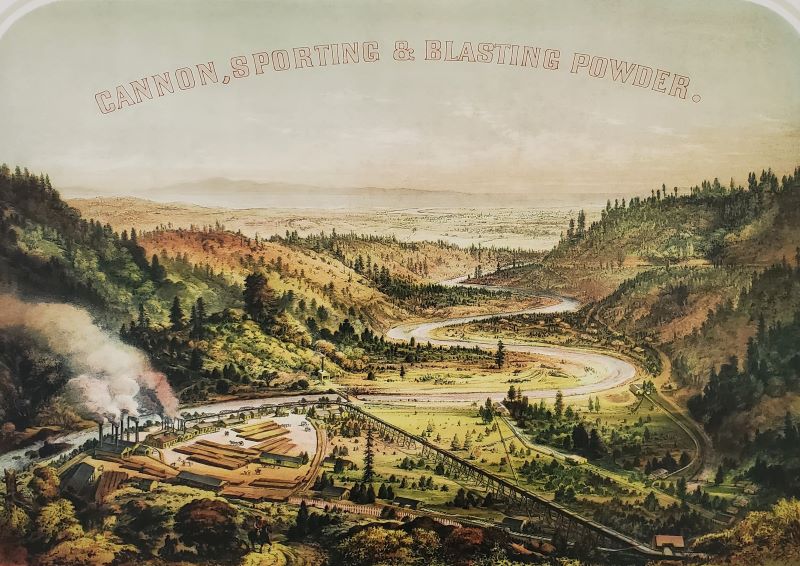
During the mid-1880s, the Chinese laborers, building much needed infrastructure, endured a toxic environment as the anti-Chinese movement in the San Lorenzo Valley was very strong. At an anti-Chinese meeting in Felton, held on November 25, 1885, Henry Baxter of Lorenzo stated that at present there were only six Chinamen employed in the vicinity of Boulder Creek and that they “intended to get rid of them.” Baxter is described as making an impassioned speech exhorting the people to “boycott the Chinese and all who patronized them” and by 1886 there were none remaining in the upper San Lorenzo Valley.
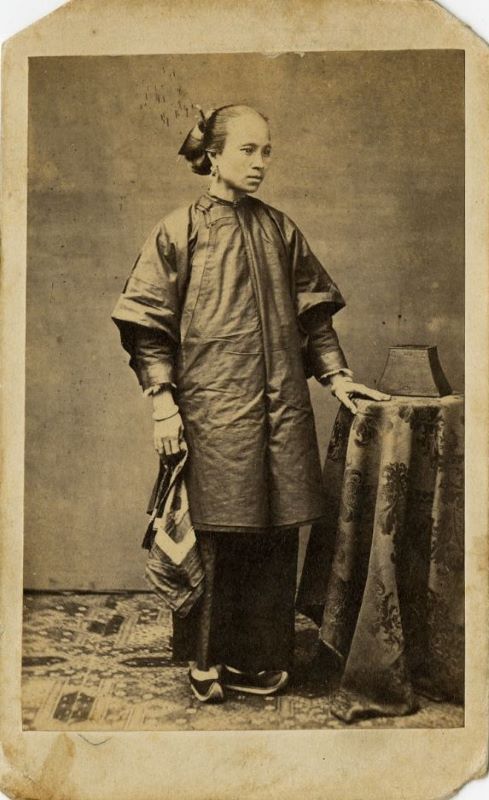
However, by 1900, the Chinese population in the Valley rebounded again, though this time occupational opportunities seemed to be limited to cooks, dishwashers and laundrymen, and again all were men. Only three of the 29 individuals had jobs other than service positions; they were woodsmen.
Faye G. Belardi Memorial Gallery
6299 Gushee Street
Felton, CA 95018
Thursday, Saturday, Sunday 1 to 4 pm
Exhibit closes November 12
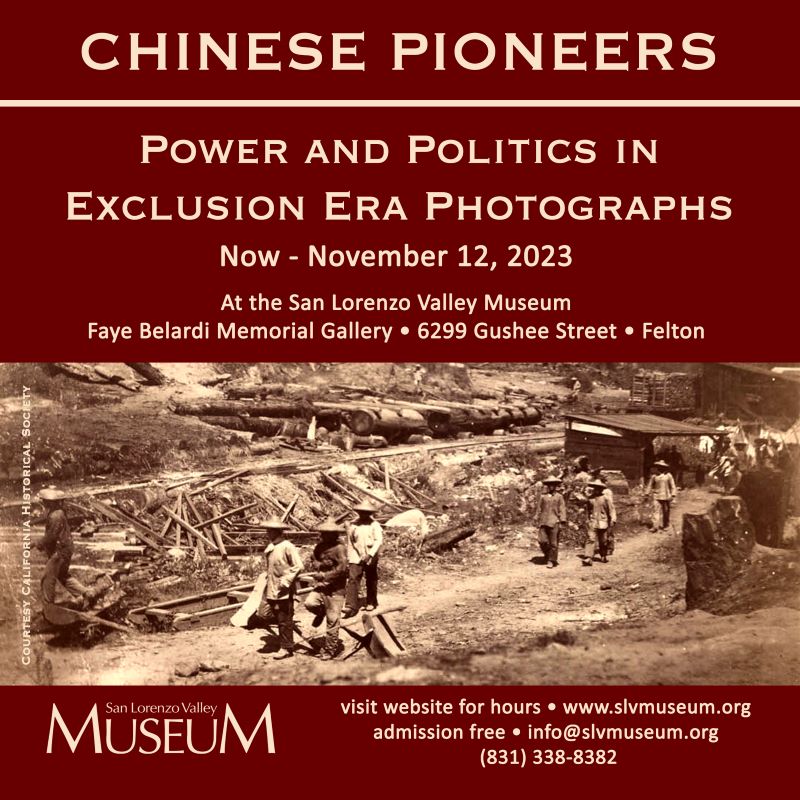
***
Have something to contribute? The San Lorenzo Valley Post welcomes your Santa Cruz Mountains news, story ideas, photos, and letters. Send us an email.
The San Lorenzo Valley Post is your essential guide to life in the Santa Cruz Mountains. We're dedicated to delivering the latest news, events, and stories that matter to our community. From local government to schools, from environmental issues to the arts, we're committed to providing comprehensive and unbiased coverage. We believe in the power of community journalism and strive to be a platform for diverse voices.

